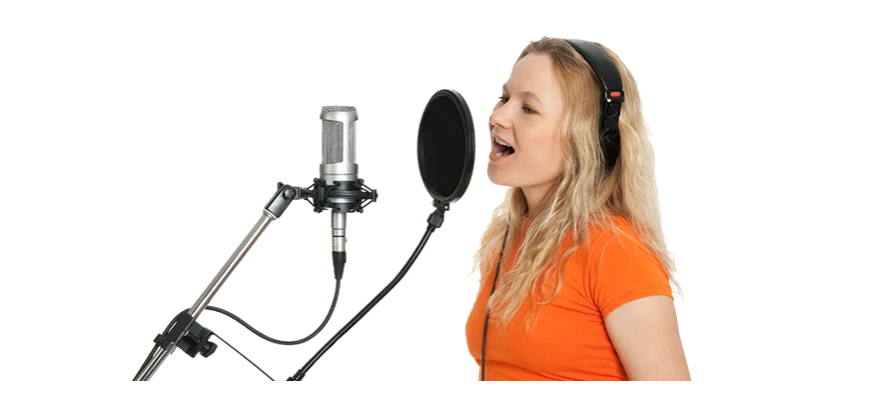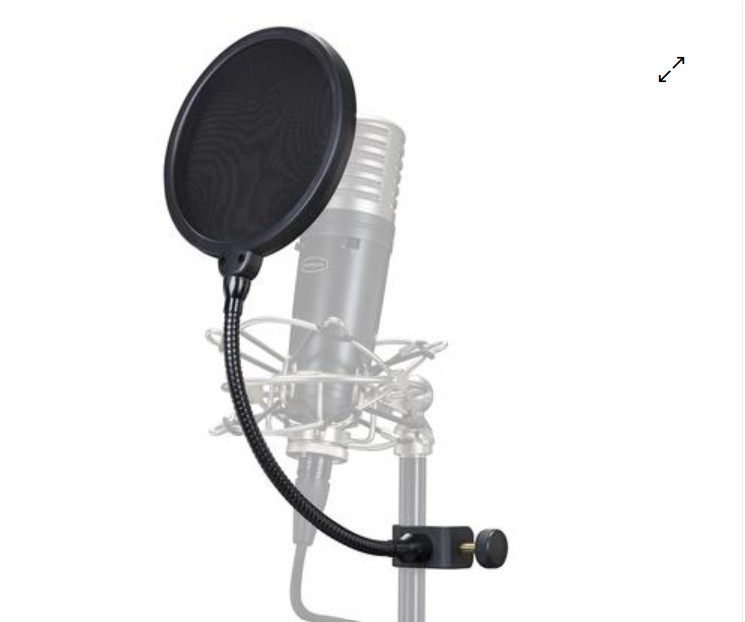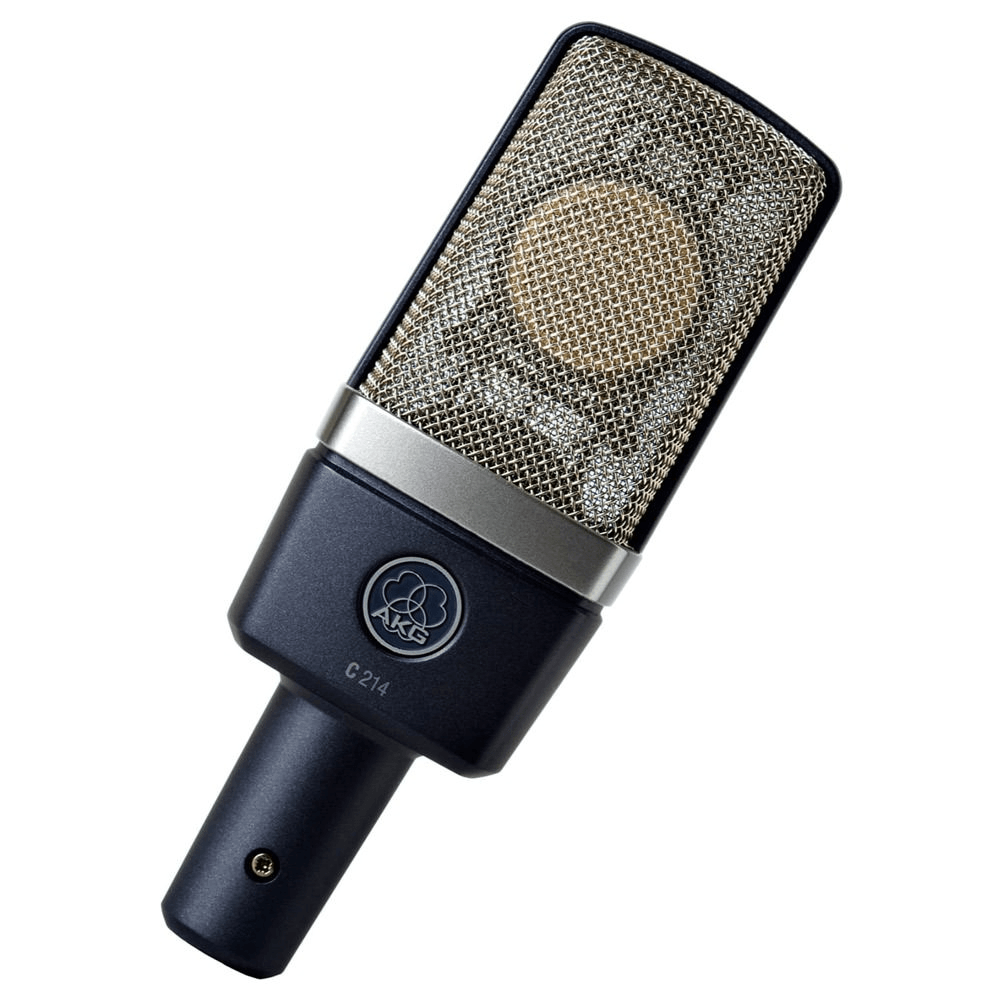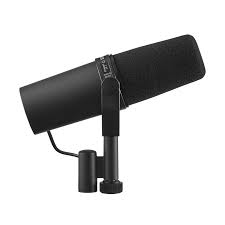Are you on a quest to capture crystal-clear vocals, whether it’s for your podcast, your latest track, or an epic voiceover? The heart of any pristine audio recording is a top-notch studio condenser microphone. These mics are the secret weapons of audio professionals, offering precision and warmth that can elevate any vocal performance. But with so many options out there, how do you choose the perfect one? Fear not! We’ve tuned into the world of sound to bring you a harmonious list of the best studio condenser microphones for vocals that hit the right note for both quality and function. Let’s dive in and find your studio’s new voice!
When selecting the best studio condenser microphone for vocals, consider the following key criteria:
- Sound Quality: The microphone should offer pristine audio capture, with a wide frequency response to accurately reproduce the nuances of the voice.
- Polar Patterns: Look for mics that provide versatile polar patterns, such as cardioid, omnidirectional, or multi-pattern, to suit different recording environments and preferences.
- Sensitivity: A good condenser microphone should be sensitive enough to pick up subtle vocal details without capturing unwanted background noise.
- Noise Floor: A lower noise floor means the microphone produces less self-noise, ensuring cleaner recordings.
- Build Quality: Durability is important, especially in a studio setting where equipment is frequently used and moved around.
- Accessories: Mics that come with useful accessories like shock mounts, pop filters, or carrying cases offer additional value and convenience.
- Compatibility: Ensure the microphone can connect to your existing equipment, whether it requires an XLR cable or phantom power.
- Brand Reputation and Reviews: Consider microphones from reputable brands and read reviews to gauge user satisfaction and the mic’s performance in real-world scenarios.
By judging options against these criteria, you’ll be able to identify the microphones that will help you achieve professional vocal recordings.
Table for Comparing Studio Condenser Microphones for Vocals
| Microphone Model | Type | Polar Pattern | Frequency Response | Sensitivity | Max SPL | Output Impedance | Approx. Price (USD) |
|---|---|---|---|---|---|---|---|
| Neumann U87 Ai | Condenser | Multipattern (Omni, Cardioid, Figure-8) | 20 Hz – 20 kHz | 28 mV/Pa | 117 dB (127 dB with pad) | 200 Ohms | $3,200 – $3,600 |
| Audio-Technica AT4040 | Condenser | Cardioid | 20 Hz – 20 kHz | 25.1 mV/Pa | 145 dB | 100 Ohms | $300 – $400 |
| Rode NT1-A | Condenser | Cardioid | 20 Hz – 20 kHz | 25 mV/Pa | 137 dB | 100 Ohms | $200 – $300 |
| AKG C214 | Condenser | Cardioid | 20 Hz – 20 kHz | 20 mV/Pa | 136 dB | 200 Ohms | $350 – $450 |
| Shure SM7B | Dynamic | Cardioid | 50 Hz – 20 kHz | -59 dBV/Pa | Not specified | 150 Ohms | $400 – $500 |
It’s important to note that the prices listed are approximate and may change over time. Additionally, these are not the only factors to consider when choosing a microphone; things like build quality, brand reputation, and included accessories also play a role in determining the best choice for your specific vocal recording needs.
Neumann U87 Ai
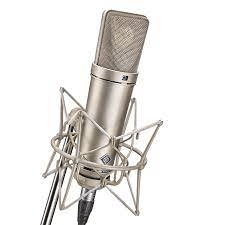
Overview
The Neumann U87 Ai is a symbol of prestige in the realm of studio microphones, and for good reason. This microphone is not just a piece of equipment; it’s an inheritance of sound excellence. From its first introduction to the market decades ago, it has been a staple in professional recording studios, revered by sound engineers and artists alike. The U87 Ai is a versatile microphone that captures vocals with precision and warmth, and it does so with a confidence that only comes from Neumann’s longstanding mastery in microphone design.
In my experience, the U87 Ai has an almost magical ability to make vocals sit perfectly in a mix without needing excessive tweaking. Its sound character is full, rich, and detailed, with a balanced tonality that flatters a wide range of vocal types. Whether you’re recording the subtle nuances of soft ballads or the raw power of rock, the U87 Ai responds beautifully.
Specs
- Polar Patterns: Cardioid, Omnidirectional, Figure-8
- Frequency Response: 20Hz – 20kHz
- Sensitivity: 28 mV/Pa
- Max SPL: 117 dB (Cardioid)
- Equivalent Noise Level: 15 dB-A
- Signal to Noise Ratio: 82 dB
- Connector: XLR3F
Pros:
- The sound quality is exceptional, with a richness and clarity that justifies its reputation.
- Its multiple polar patterns provide tremendous flexibility in various recording situations.
- The build quality is rock-solid, exuding professional-grade durability and reliability.
- The low self-noise ensures that recordings are clean and free of unwanted hiss.
- It carries a legacy and a sense of prestige that can be an inspiration during recording sessions.
Cons:
- The price is steep, making it a significant investment for most home studios.
- It may require additional outboard gear, such as a high-quality preamp, to truly shine.
- It’s so detailed it may require careful room treatment and microphone placement to avoid capturing unwanted room characteristics.
Price
The U87 Ai is a premium product with a price tag to match, typically running over $3,000. It’s definitely on the high end of the market, but it’s one of those purchases where you’re paying for unparalleled quality and a piece of recording history. For serious studio owners and audio professionals, the investment can pay itself back through the microphone’s performance and longevity, not to mention the prestige it adds to a studio setup.
Summary
The Neumann U87 Ai is, quite simply, an icon in the recording industry. It’s not just a microphone but a statement of commitment to quality and professionalism. The price may be prohibitive for some, but for those looking to invest in a microphone that can lift their recordings to professional heights, the U87 Ai is a choice that’s hard to second-guess. You’re not simply buying a tool; you’re investing in a legacy of sound.
Audio-Technica AT4040
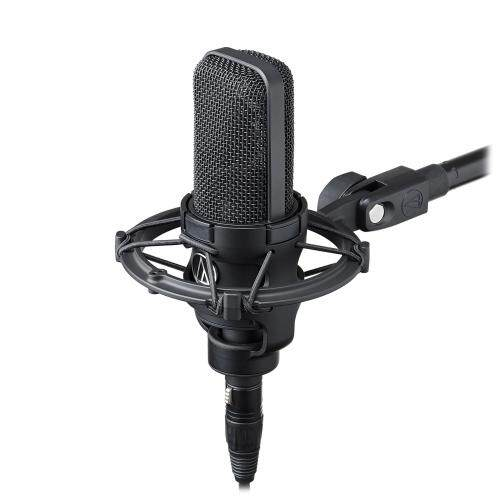
Overview:
The Audio-Technica AT4040 is a versatile studio condenser microphone that offers a blend of technical excellence and affordability. It is often praised for its ability to handle a wide dynamic range and provide a natural sonic character, making it suitable for capturing pristine vocal recordings.
Upon first using the AT4040, what strikes me most is its sleek design paired with robust construction. It doesn’t feel flimsy or delicate in the hands which instills confidence during setup and recording. The sound profile is remarkably flat and uncolored, allowing for the natural tone of the voice to shine through – this microphone doesn’t impose its own character too much on the source, which I appreciate.
When putting the AT4040 through its paces in a vocal session, its high SPL handling and wide dynamic range stand out. It captures both the subtle details and the powerful belts with equal fidelity. There’s a presence boost that seems to add a bit of sparkle to the vocals, which can make a performance feel more lively and engaging.
Specs:
- Polar Pattern: Cardioid
- Frequency Response: 20Hz to 20kHz
- Signal to Noise Ratio: 82dB, 1kHz at 1Pa
- Max SPL: 155 dB SPL (with 10 dB pad)
Pros:
- Natural and uncolored sound profile, which is excellent for versatile vocal recording.
- It handles high sound pressure levels well, meaning it’s great for both soft and loud vocalists.
- The presence boost around the upper mids highlights vocal clarity and intelligibility without being harsh.
Cons:
- While the cardioid pattern is pretty tight, off-axis noise rejection isn’t the absolute best. It’s not a huge drawback but requires a mindful studio setup.
- Lacks multiple pickup patterns, which limits versatility for different recording scenarios compared to multi-pattern mics.
Price:
The price of the Audio-Technica AT4040 typically hovers around the mid-range for studio condenser microphones, proving to be a cost-effective solution for those who want a professional sound without the premium price tag of some high-end competitors. It’s a smart investment for project and home studios alike that could benefit from a do-it-all workhorse microphone.
Rode NT1-A
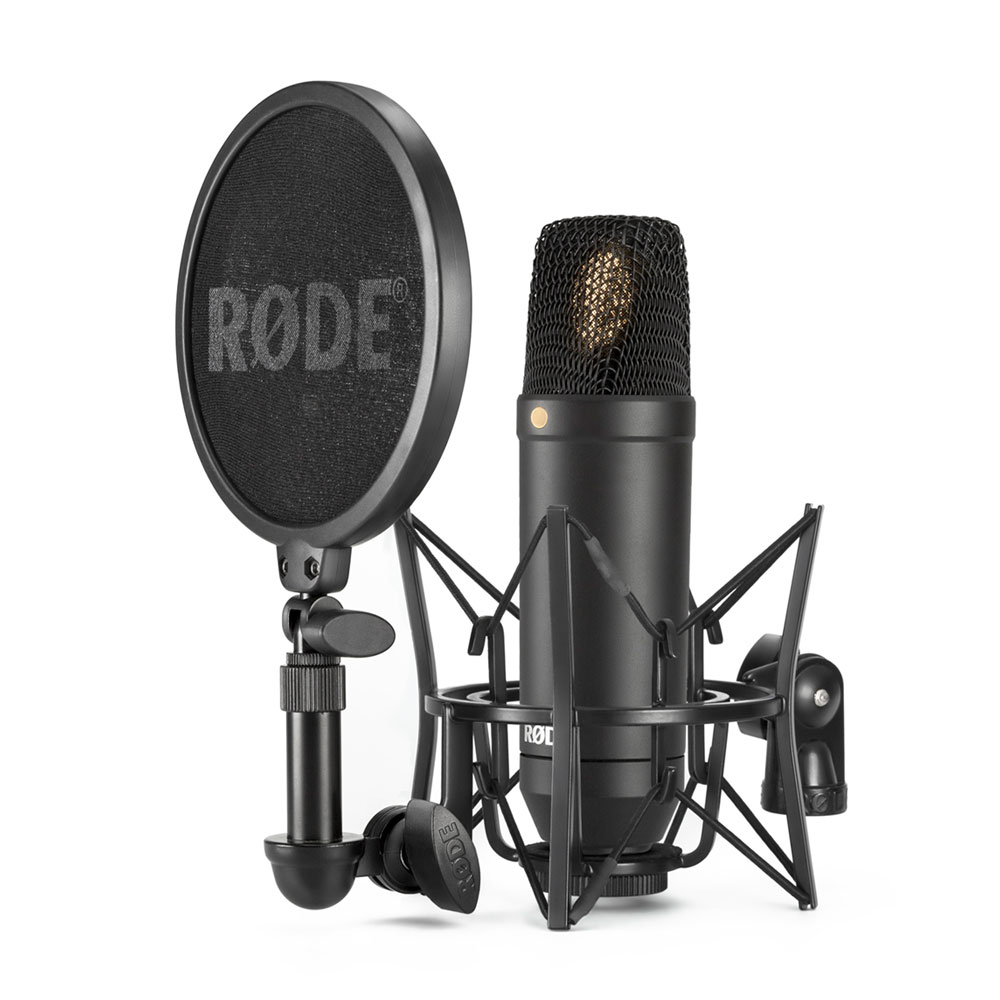
Overview:
The Rode NT1-A is a piece of recording wonder wrapped in a metallic coat of purity and warmth that has garnered attention for its remarkable clarity. Often celebrated as a ‘studio workhorse,’ this condenser microphone stands out for its versatility across various vocal applications, whether you’re recording a silky songwriter or a powerful rock vocalist. It has a presence of a kind but detailed character that flatters a wide range of voice types.
In my experience, the NT1-A performs exceptionally well in a controlled studio environment. Its low noise is almost magical, ensuring that even the most subtle nuances of a performance are captured without interference. The sound is crisp and focused, with a bright top-end that can make vocals sparkle in the mix. It may not have the rich vintage character of some significantly more expensive mics, but it nonetheless provides a very professional sound that will be more than satisfactory for most home studios and beyond.
Specs:
- Acoustic Principle: Pressure Gradient
- Polar Pattern: Cardioid
- Frequency Range: 20 Hz – 20 kHz
- Output Impedance: 100Ω
- Equivalent Noise: 5 dBA
- Maximum SPL: 137dB SPL (@ 1kHz, 1% THD into 1KΩ load)
- Sensitivity: -31.9dB re 1 Volt/Pascal (25.00mV @ 94 dB SPL) +/- 2 dB @ 1kHz
- Weight: Approx. 326g
Pros:
- The extremely low self-noise of just 5 dBA, which is phenomenal for a mic at this price point. It’s whisper-quiet, ensuring that what you’re recording is the vocal take, not the sound of your room.
- The balanced frequency response accentuates the right frequencies for both male and female vocals.
- It comes complete with a shock mount, pop shield, XLR cable, and a dust cover, meaning you have nearly everything you need right out of the box.
- The build quality is robust, feeling solid and reliable, which is reassuring if you’re investing in your first serious microphone.
Cons:
- It can be slightly sibilant with some vocals, emphasizing “s” sounds, so it occasionally requires a bit of post-production or a careful positioning to mitigate this.
- The bright characteristic might not suit every single voice or application—if warmth is your main goal, you might want to look elsewhere.
Price:
The Rode NT1-A usually hovers around the $230 price mark, which, for the quality you’re getting, feels like quite a steal. It’s a price that doesn’t require maxing out your credit card but gives you a piece of professional equipment capable of a high-quality output.
In conclusion, the Rode NT1-A is an astounding example of how far microphone technology has come, offering professional-grade specifications at a price that’s accessible to the masses. If your search is for a microphone that provides clarity, detail, and a rich, full-bodied sound on a budget, then the NT1-A could very well be your match. It strikes a fine balance, capturing a true-to-life snapshot of every vocal performance.
Sure, let’s start by introducing the AKG C214, which is product number 4 on your list, and then I’ll provide an in-depth review.
AKG C214
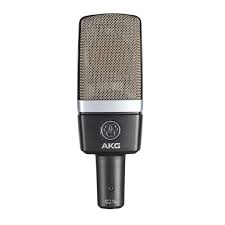
Overview:
The AKG C214 is a highly regarded studio condenser microphone, often praised for its versatility and clear sound reproduction, making it a popular choice for vocal recording in various settings. It’s designed as a cost-effective alternative to the more expensive C414, borrowing many features from its illustrious sibling. Upon unboxing the C214, what struck me first was its robust construction – it feels substantial and ready for extensive studio use.
When I put it to the test, the C214’s performance with vocals was impressive. The microphone produces a warm, yet detailed sound that captures the nuances of the human voice beautifully, without overemphasis on sibilance or plosives. This is particularly useful for both singing vocals and spoken word, allowing for post-production adjustments without battling an uneven frequency response. Its cardioid pickup pattern does an excellent job at isolating the sound source, which is ideal for busy studio environments where bleed-over from other instruments could be a concern.
Specs:
- Polar Pattern: Cardioid
- Frequency Response: 20Hz to 20kHz
- Sensitivity: 20 mV/Pa
- Equivalent Noise Level: 13 dB-A
- Max SPL: 156 dB (with Pad)
- Dynamic Range: 143 dB
Pros:
- Delivers a close sonic performance to its pricier relative, the AKG C414.
- Features a rugged build quality that suggests longevity and reliability.
- Its low noise and broad dynamic range are ideal for capturing detailed vocal performances.
- Its sound profile lends itself well to a variety of vocal styles, from soft and intimate, to loud and energetic.
Cons:
- Lacks multiple polar pattern options found in multipattern microphones, which limits its versatility somewhat.
- Might not flatter every voice type equally, as it has a distinctive coloration that, while generally pleasing, may not suit everyone.
Price:
The AKG C214 is often found in the mid-range price bracket for studio condenser microphones. Its price is justified considering the quality of performance it delivers, positioning it as a middle ground option for both budding home-studio enthusiasts and seasoned professionals who are looking for a reliable workhorse without the steep cost of high-end models.
Final thoughts: The AKG C214 is an accessible path to professional-quality vocal recordings. It doesn’t offer all the bells and whistles of more expensive microphones, but it nails the fundamentals with aplomb. It’s a microphone that inspires confidence — both in its sound and build. For those weighing up price against performance, it’s a choice that’s hard to argue with.
Shure SM7B
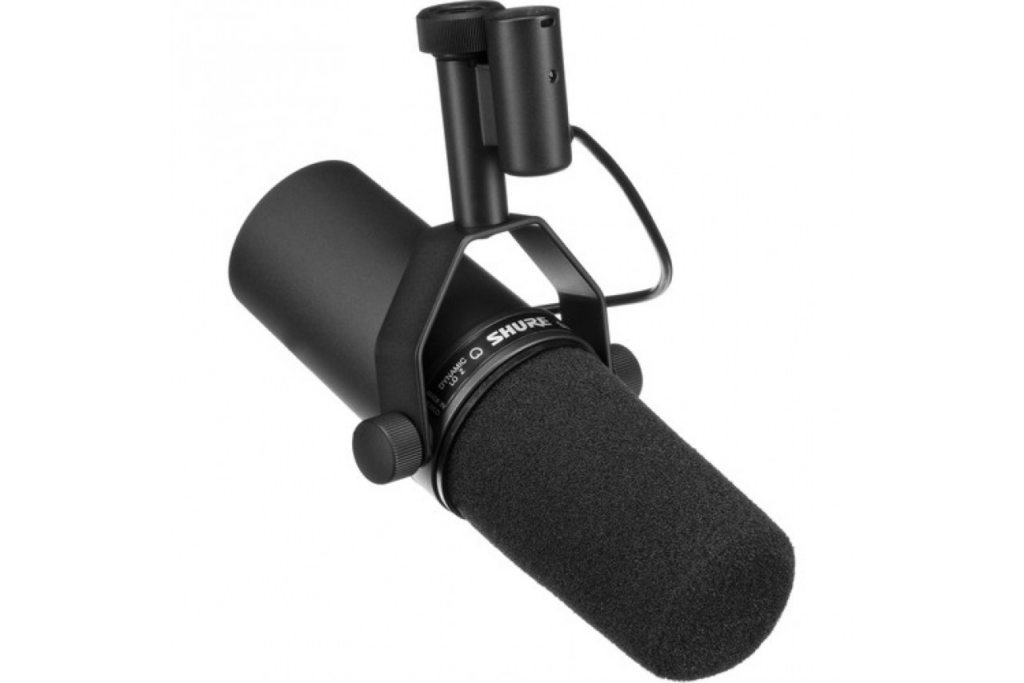
Overview
The Shure SM7B is a studio condenser microphone that has forged its reputation through impeccable performance and durability. It’s widely recognized for its versatility and is a favorite for vocal reproduction, thanks to its flat, wide-range frequency response which preserves the natural beauty of the voice. This microphone stands out for its ability to capture warm, smooth sounds, making it a go-to for everything from professional studio recording to podcasting and streaming.
From my experience with the SM7B, one of its most striking features is the way it handles vocals with finesse, offering clarity alongside rich detail. The SM7B has an uncanny knack for pushing vocals to the front of the mix without harshness or unwanted sibilance. It ensures that your recordings are broadcast-quality, with passive noise cancellation that excels in even minimally treated spaces—a testament to its well-engineered design.
Specs
- Type: Dynamic
- Polar Pattern: Cardioid
- Frequency Response: 50 Hz to 20 kHz
- Output Impedance: 150 ohms
- Sensitivity: -59 dB
Pros:
- Exceptional handling of vocals with a natural and balanced sound.
- With its cardioid pattern, it does a fantastic job of isolating the sound source and rejecting off-axis audio.
- Built-in air suspension shock isolation and pop filter minimize mechanical noise and breathiness.
- Highly robust construction, which is both a hallmark of Shure’s design philosophy and a boon for longevity.
Cons:
- The microphone requires a decent amount of clean gain, which might necessitate a high-quality preamp or an inline preamp like a Cloudlifter.
- It doesn’t come with XLR cables, so you need to budget for good-quality cables to get started.
- Its heavier weight means you’ll need a sturdy mic stand, which could be an additional cost if you don’t already own one.
Price
The Shure SM7B is priced around $400, which, given its outstanding performance and build quality, presents a considerable value for those serious about their sound. It’s an investment for sure, but for the discerning audio professional or hobbyist, it’s a purchase that pays dividends in audio quality.
In conclusion, the Shure SM7B is a stellar performer that has earned its spot in the pantheon of great vocal microphones. Whether you are recording sultry jazz, powerful rock vocals, or hosting a podcast with a focus on rich vocal quality, the SM7B is more than capable. It’s a classic piece of equipment that can elevate your audio significantly, provided you’re ready to support its needs for proper gain and mounting equipment.
Conclusion
Selecting the best studio condenser microphone for vocals truly depends on matching your specific needs, budget, and recording environment with the right piece of equipment. Whether you are a beginner looking to make a solid entrance into recording or a seasoned professional aiming for unmatched audio fidelity, there is a microphone out there for you. Remember to consider factors such as polar patterns, frequency response, and presence of any additional features when making your choice. Quality audio is the backbone of great productions, so investing in the right microphone can elevate your vocal recordings to the next level.
Looking beyond studio setups, capturing high-quality vocals on-the-go has become essential for creators in 2024. For those seeking flexible and professional audio outside traditional studio boundaries, a wireless lavalier microphone can be a game-changing addition to your toolkit.
FAQs
Q: What makes a condenser microphone good for vocals?
A: Condenser microphones are typically favored for vocals because of their sensitivity and wide frequency response, which allows them to capture the nuances of the voice. Their ability to pick up subtle details makes them ideal for studio use.
Q: Do I need a pop filter when recording vocals with a condenser microphone?
A: Yes, a pop filter is highly recommended. It prevents plosives (like ‘p’ or ‘b’ sounds) from creating a popping sound in your recording by dispersing the air from your mouth before it hits the microphone diaphragm.
Q: Can I use a condenser microphone for live vocal performances?
A: While condenser microphones are commonly used in studio settings, some are built to handle the demands of live performances. However, dynamic microphones are generally more rugged and less sensitive to feedback, making them a more common choice for live scenarios.


































.png)


